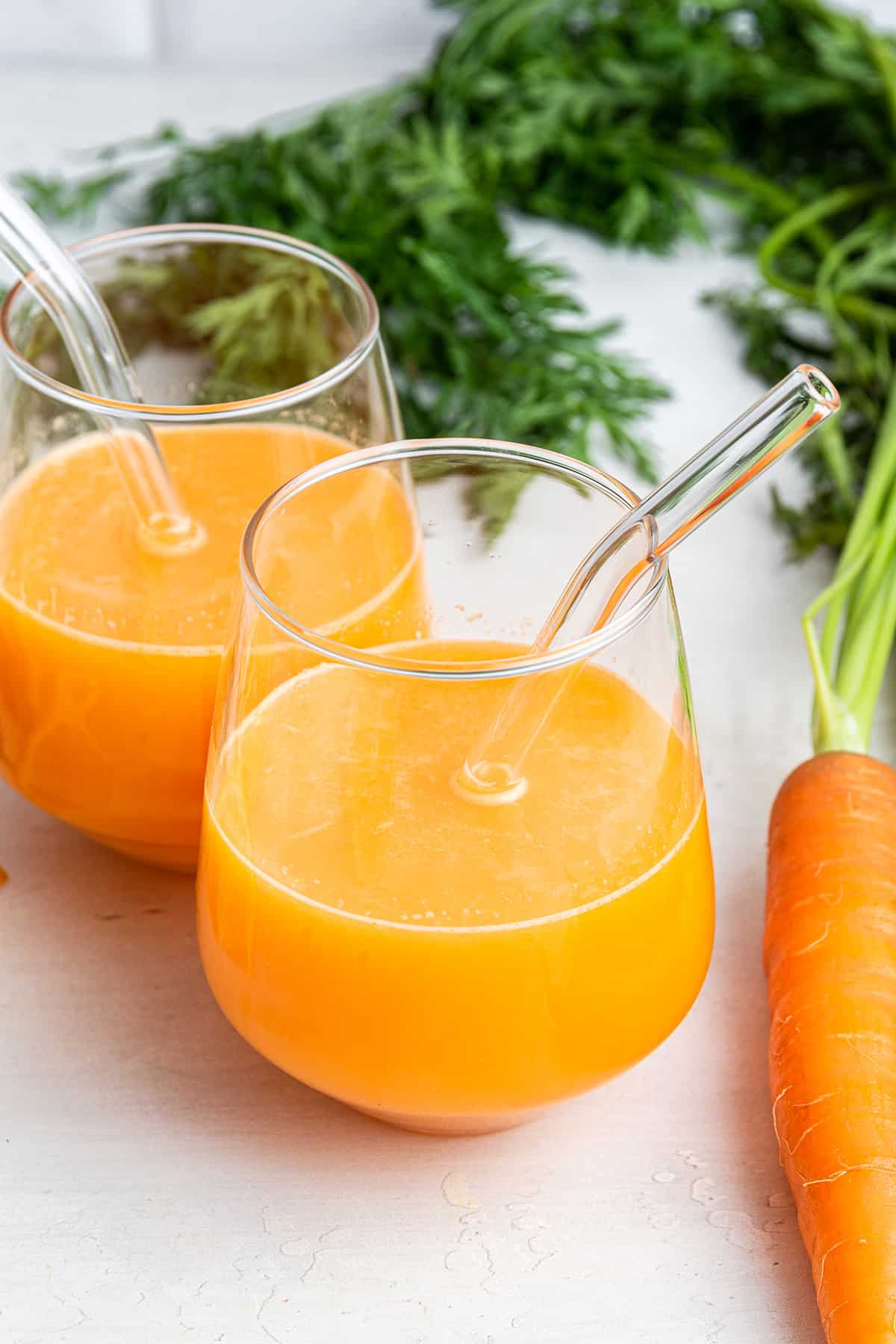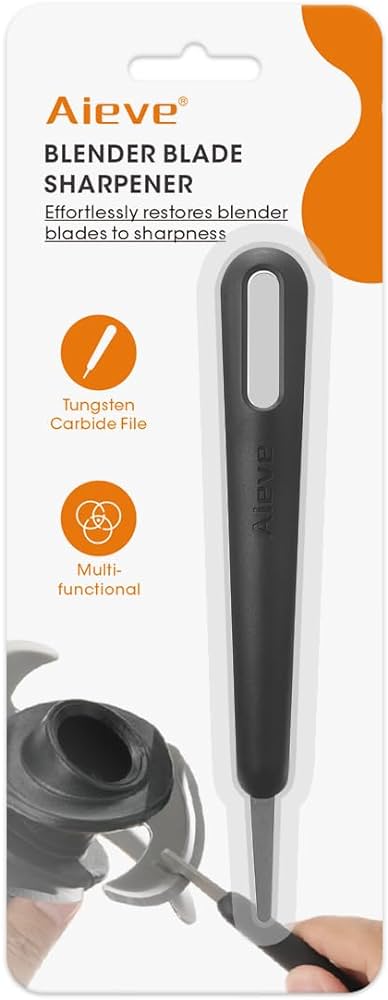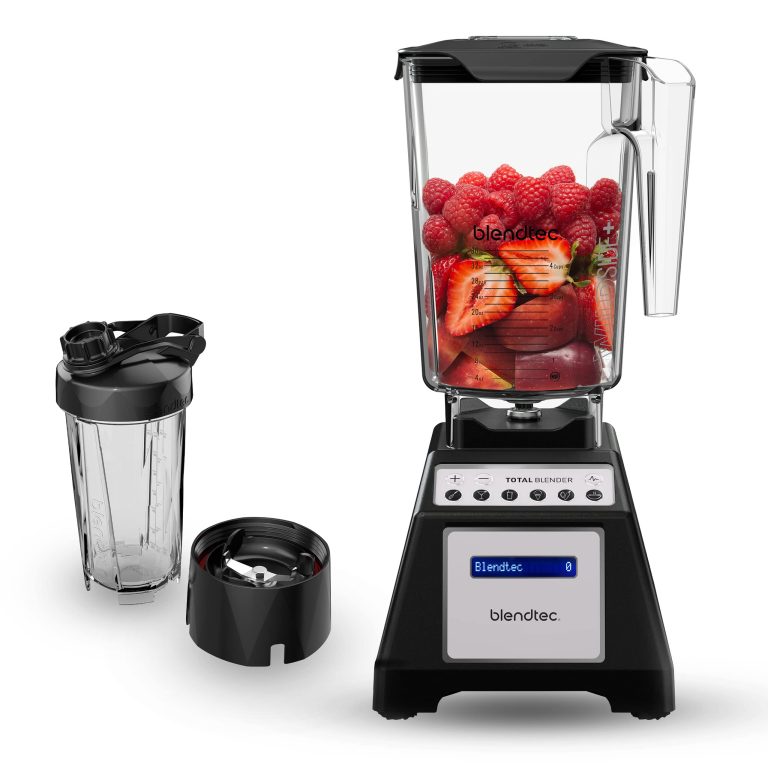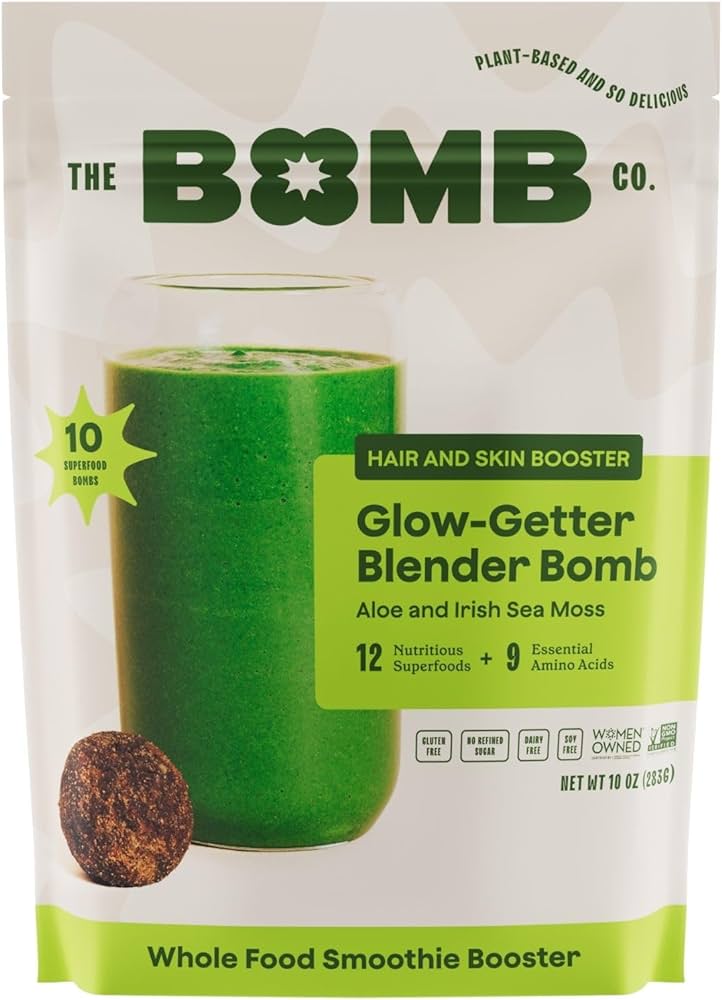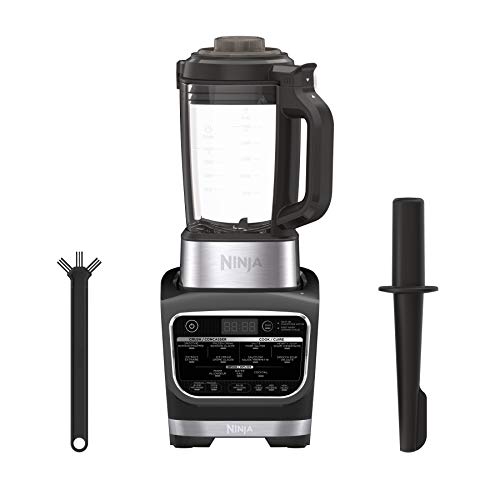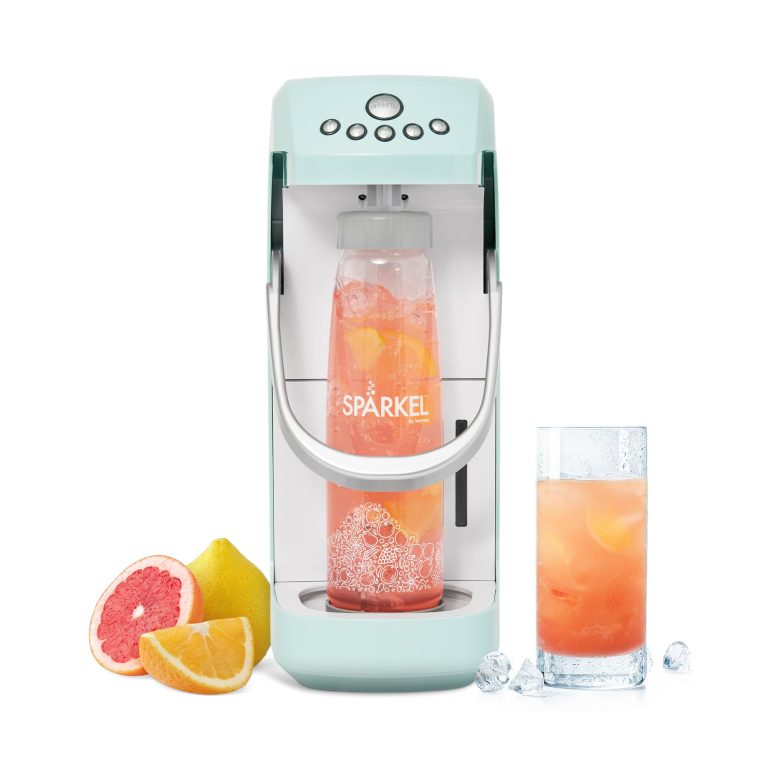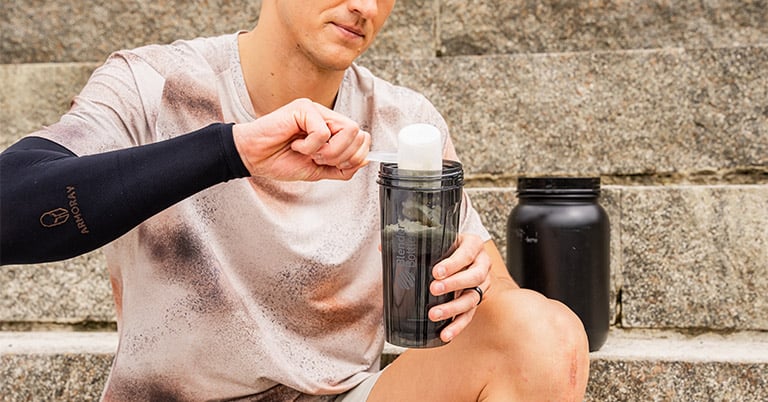How To Make Carrot Juice In A Blender: Quick & Easy Guide
To make carrot juice in a blender, chop carrots, add water, blend until smooth, and strain the mixture. Pour the contents through a fine mesh sieve or cheesecloth to extract the juice.
Carrot juice is a nutritious and delicious beverage that can be easily made at home with a blender. This refreshing drink is loaded with vitamins, particularly vitamin A, which is essential for eye health. Blenders, which most people have in their kitchens, are perfect for the job.
They transform the crunchy texture of carrots into a smooth liquid with the help of a little water. By straining the pulp, you get a clear, smooth juice that retains most of the nutrients. Making your own juice also means you can enjoy a fresh, preservative-free drink with all the natural flavors of carrots. If you’re seeking a quick, healthy, homemade option, blending carrot juice might be your best bet.
Carrot Juice: A Blend Of Health And Taste
Imagine a drink that’s both a health elixir and a splash of taste – that’s carrot juice. It’s easy to make, especially with a blender on hand. Sipping on this vibrant beverage is like treating yourself to a cup of wellness.
Why Carrot Juice?
Carrot juice is a powerhouse of nutrients. It’s not just refreshing but also offers benefits that other drinks can’t match. Its natural sweetness is a bonus, making it a favorite among all ages.
Nutritional Benefits At A Glance
Drink to your health with every glass of carrot juice. Packed with vitamins and minerals, it’s a smart choice. Here’s what you get:
| Vitamin/Mineral | Benefit |
|---|---|
| Vitamin A | Boosts eye health |
| Vitamin C | Supports immunity |
| Vitamin K | Improves bone health |
| Potassium | Regulates blood pressure |
| Dietary Fiber | Enhances digestion |
The list goes on with antioxidants that fight damage from free radicals. Carrot juice is more than just a treat for your taste buds; it’s your body’s friend.
Choosing The Best Carrots
Starting your wellness journey with homemade carrot juice begins with the most vibrant and healthful ingredient: carrots themselves. Picking the right carrots ensures your juice will be brimming with nutrients and flavors that delight and nourish.
Types Of Carrots For Juicing
Not all carrots yield the same taste or benefits. To maximize the impact of your juice, understanding the carrot variety is vital.
- Nantes carrots: These are sweet and perfect for raw consumption.
- Imperator carrots: Known for a longer shape, they have a profound taste.
- Danvers carrots: They are rich in sugar and ideal for a robust flavor profile.
- Chantenay carrots: These are shorter but pack an impressive amount of juice.
Selecting Fresh Carrots
Juice quality is directly related to the freshness of the carrots. Here’s how to pick the best:
- Look for a deep orange color, indicating a high level of beta-carotene.
- Ensure the carrots are firm to touch and free of spots and blemishes.
- Leaves should be bright green, signaling recent harvest and freshness.
- The presence of a smooth skin suggests a tender texture without the woodiness.
| Attribute | What to Look For |
|---|---|
| Color | Deep Orange |
| Texture | Firm and Smooth |
| Leaves | Bright Green |
| Skin | Smooth, Not Woody |
Choose carrots that feel heavy for their size, a sign of juicy flesh inside. Smaller carrots tend to be sweeter, perfect for a more enjoyable drink.
Pre-juicing Prep
Before you blend a delicious glass of carrot juice, taking time for prep work ensures a smooth process. Clean, peeled, and properly chopped carrots blend more easily. This yields a better-textured juice. Let’s dive into the pre-juicing preparation steps.
Washing And Cleaning
Carrots come from the ground, so you must clean them well. Begin by rinsing carrots under cool running water. Use a soft vegetable brush to scrub away dirt. Make sure to remove all traces of soil and debris. This step is crucial for a grit-free juice.
Peeling: Necessary Or Not?
Some juicers skip peeling, but peeling has benefits. It removes any bitter taste and ensures a vibrant orange color. If you washed them thoroughly, peeling is optional. However, to get the smoothest juice, peeling is recommended.
Chopping Techniques For Better Blending
Chunky pieces can strain your blender. Cut carrots into smaller, uniform pieces for the best blend.
| Knife Technique | Carrot Size |
|---|---|
| Angle cuts | 1/2 inch thick |
| Dice | 1/2 inch cubes |
| Slice | 1/4 inch rounds |
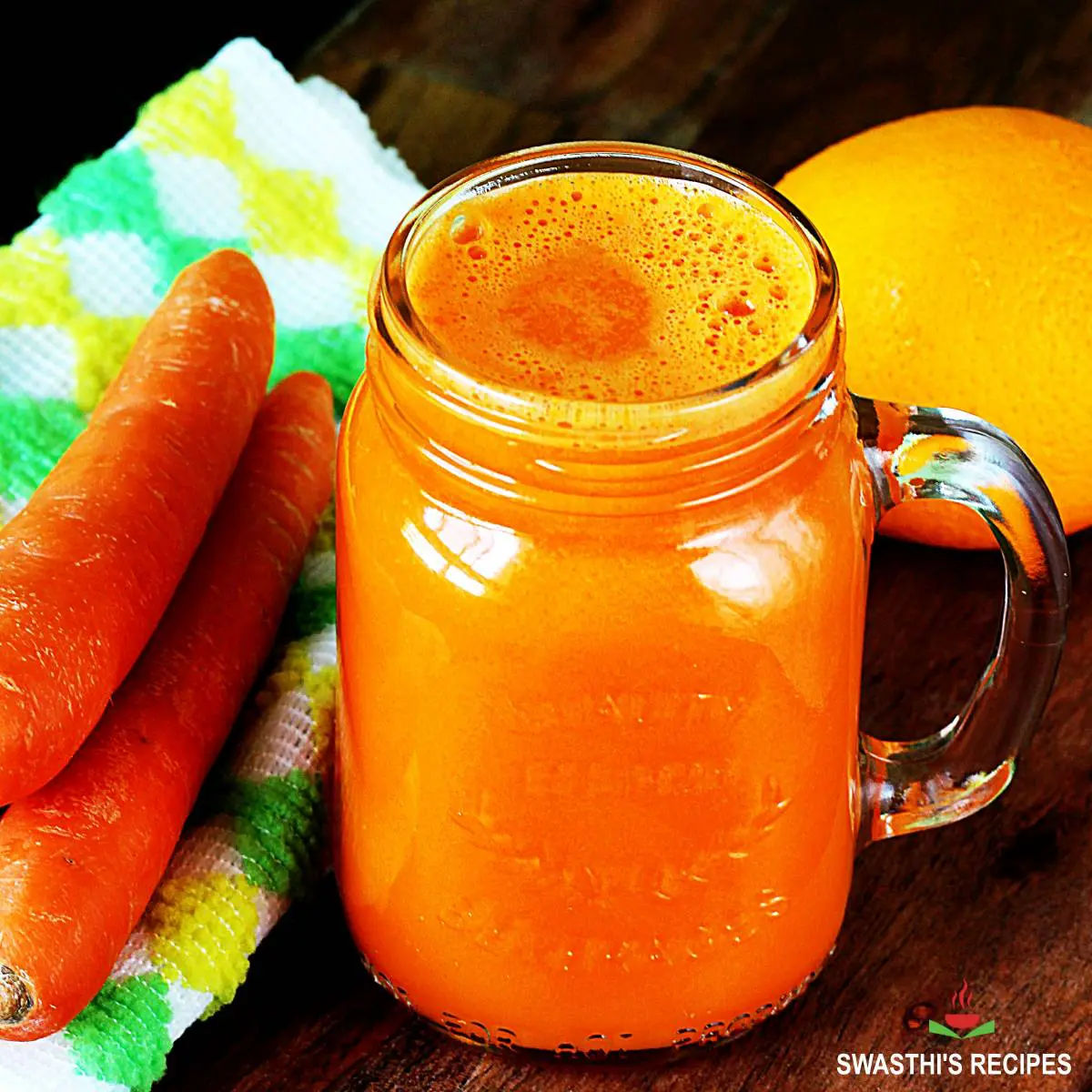
Credit: www.indianhealthyrecipes.com
Mastering The Blend
Mastering the blend is key to creating the perfect carrot juice with your blender. With the right settings and duration, you can achieve that silky-smooth texture that makes every sip delightful. Let’s dive into how to get the most out of your blender and craft a refreshing glass of carrot juice.
Blender Settings For Optimal Consistency
Blenders come with various settings. Use the “Pulse” feature to chop the carrots. After pulsing, switch to “Puree” or “Liquify” for a smooth juice. Here’s how to set up your blender:
- Pulse: Use this to break the carrots into smaller pieces.
- Low: Start blending on low to mix the pieces without strain.
- Increase Speed: Gradually ramp up to medium, then to high.
- Finish on Puree/Liquify: End with these settings for a silky texture.
Always start at a low speed to prevent overheating and maintain motor health. Remember, each blender is unique; consult the manual for specific settings.
Duration Of Blending For Perfect Texture
The blending duration is just as crucial as the settings. Too short and your juice will be chunky, too long and you may overheat the juice, causing nutrient loss.
| Step | Duration | Description |
|---|---|---|
| Pulse | 30-60 seconds | Chop carrots into blendable sizes. |
| Low | 1 minute | Start blending the pieces together. |
| Medium to High | 1-2 minutes | Ensure all pieces are well blended. |
| Puree/Liquify | 1 minute | Finish to get the perfect texture. |
Monitor the texture throughout blending. Strain through a mesh sieve if desired. Don’t blend continuously for too long; give your machine rest if needed.
By understanding your blender’s settings and the right blending duration, you’ll get that perfect carrot juice texture every time. So, grab your carrots, and let’s start juicing!
Straining For Smoothness
After blending your carrots to a pulp, the next step is straining for smoothness. Perfectly silky carrot juice calls for a bit of patience and the right technique. Let’s delve into how to pick the perfect strainer and the best ways to ensure maximum juice yield from your pulp.
Choosing The Right Strainer
A great strainer makes all the difference. Not all kitchen strainers are created equal, so choose wisely to ensure your carrot juice is lump-free.
- Cheesecloth: A popular option due to its fine mesh.
- Fine mesh strainer: Works well if you don’t have a cheesecloth.
- Nut milk bag: Reusable and perfect for straining juice.
Techniques To Maximize Juice Yield
Getting the most juice from your pulp is easy with the right approach. Here are some fail-proof techniques:
- Place your strainer over a large bowl.
- Pour the blended carrot mixture into the strainer.
- Press the pulp with a spoon to start the straining process.
- For the best yield, twist and squeeze the remaining pulp.
Following these steps will give you a glass of smooth, refreshing carrot juice ready to enjoy!
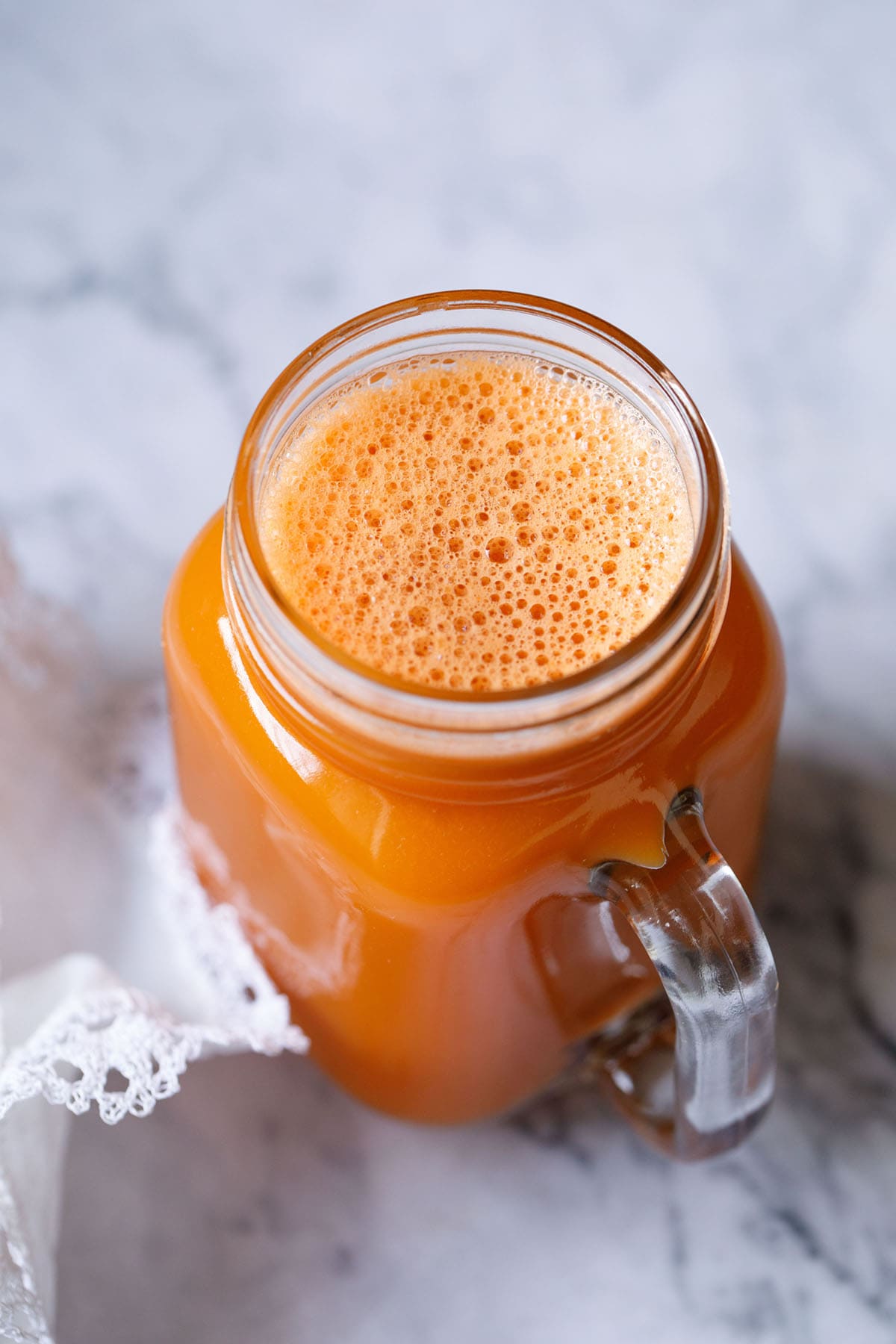
Credit: www.vegrecipesofindia.com
Serving Suggestions And Storage
Welcome to the delightful world of homemade carrot juice! You’ve blended up a vibrant, nutrient-packed beverage, but what next? Serving your freshly made carrot juice in appetizing ways and storing it properly for later enjoyment is key. Below, find irresistible serving tips and essential storage advice to keep your carrot juice fresh and flavorful.
Enhancing Flavor With Add-ins
Transform your carrot juice into a gourmet treat with simple add-ins:
- A dash of citrus: Squeeze in lemon or lime to elevate the taste.
- Ginger kick: Grate a bit of fresh ginger for a warming zing.
- Sweet touch: A spoonful of honey or agave nectar can sweeten things up.
- Minty freshness: Blend fresh mint leaves for a cool, refreshing twist.
Experiment with these add-ins to find your perfect carrot juice blend.
Refrigeration And Shelf Life Of Homemade Juice
Safely store your carrot juice to keep it fresh:
- Immediate chill: Pour the juice into an airtight container and refrigerate at once.
- Shelf life: Homemade carrot juice stays fresh for up to 48 hours.
- Taste check: Always sniff and sip a small amount before drinking to ensure quality.
Fresh is best, so enjoy your carrot juice within this timeframe for peak flavor.
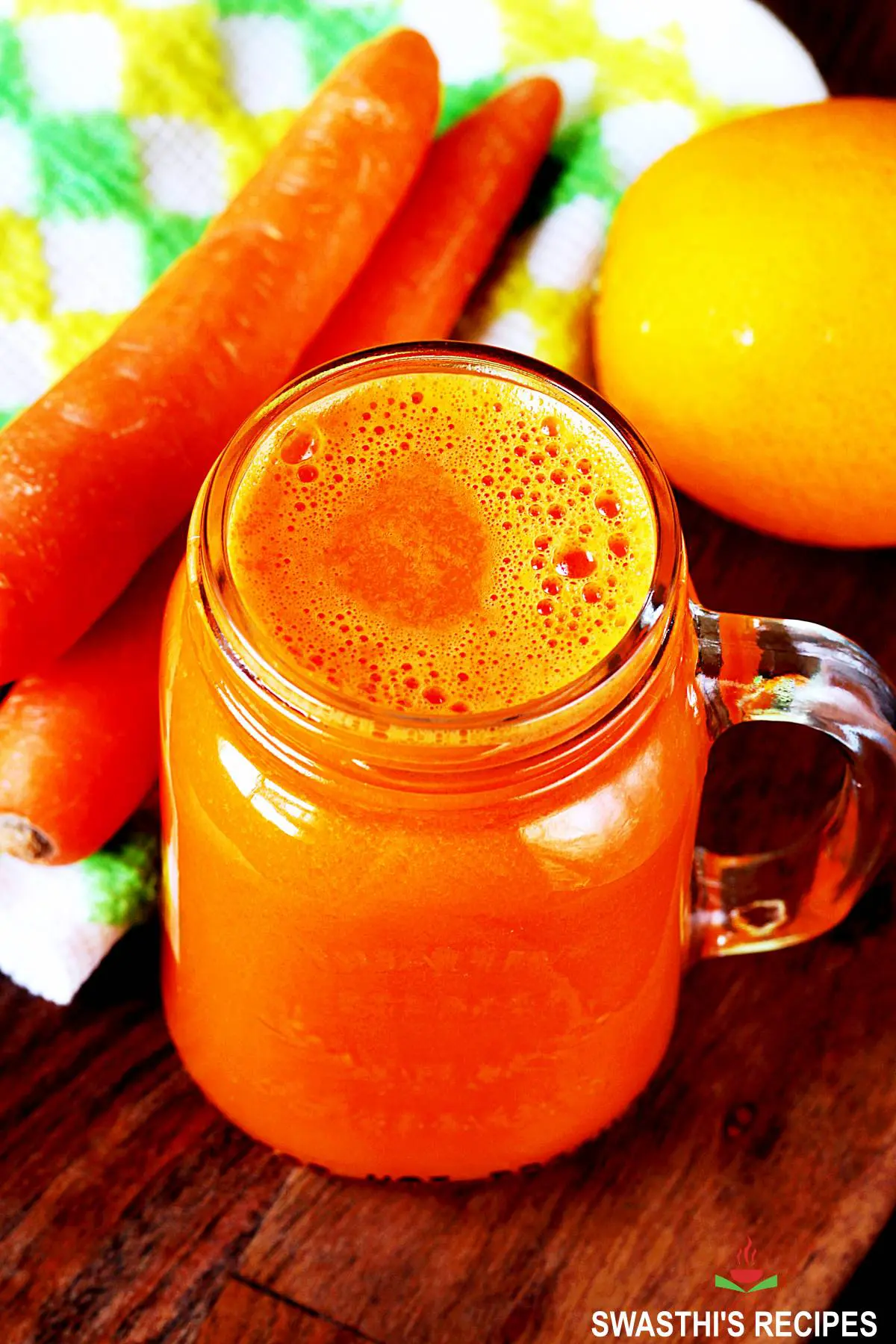
Credit: www.indianhealthyrecipes.com
Frequently Asked Questions For How To Make Carrot Juice In A Blender
What Are The Health Benefits Of Carrot Juice?
Carrot juice is rich in vitamins A, C, and K, essential for good vision, skin health, and blood clotting. It’s also known to boost immunity and improve heart health due to its antioxidants.
Is It Necessary To Peel Carrots Before Juicing?
No, it’s not necessary to peel carrots before juicing, as the skin contains nutrients. However, make sure to wash them thoroughly to remove any dirt or pesticides.
Can I Add Other Ingredients To My Carrot Juice Blend?
Absolutely, adding ingredients like ginger, apples, or lemons can enhance flavor and nutritional value. Experiment with different combinations to find your perfect mix.
What’s The Best Way To Store Homemade Carrot Juice?
Homemade carrot juice should be stored in an airtight container in the refrigerator. Drink it within 24 hours to ensure freshness and minimize nutrient loss.
Conclusion
Making carrot juice at home is both rewarding and nourishing. With a decent blender, fresh carrots, and a few simple steps, you’ve created a vitamin-packed drink. Embrace the vibrant taste and health benefits your homemade juice offers. Cheers to your wellness journey!

